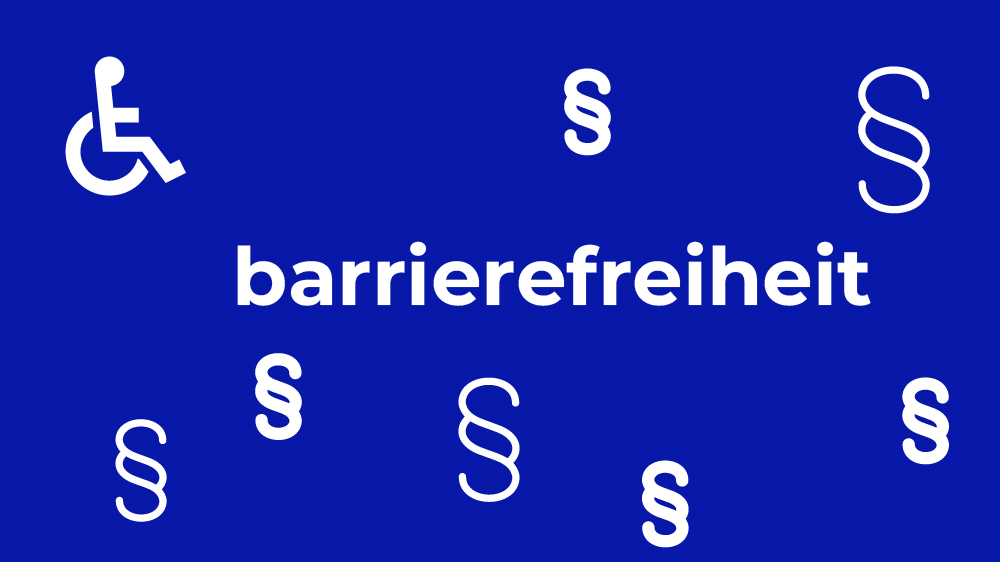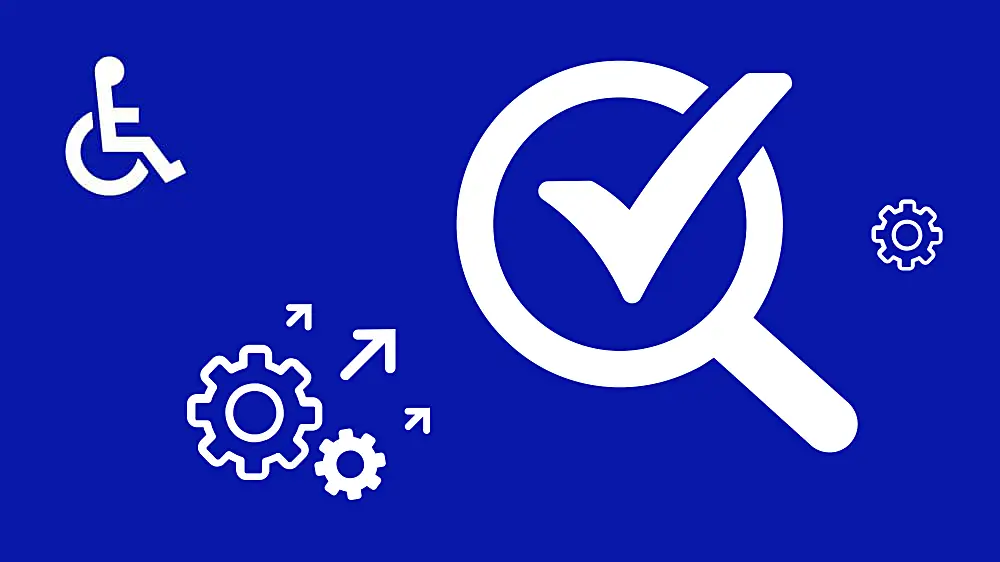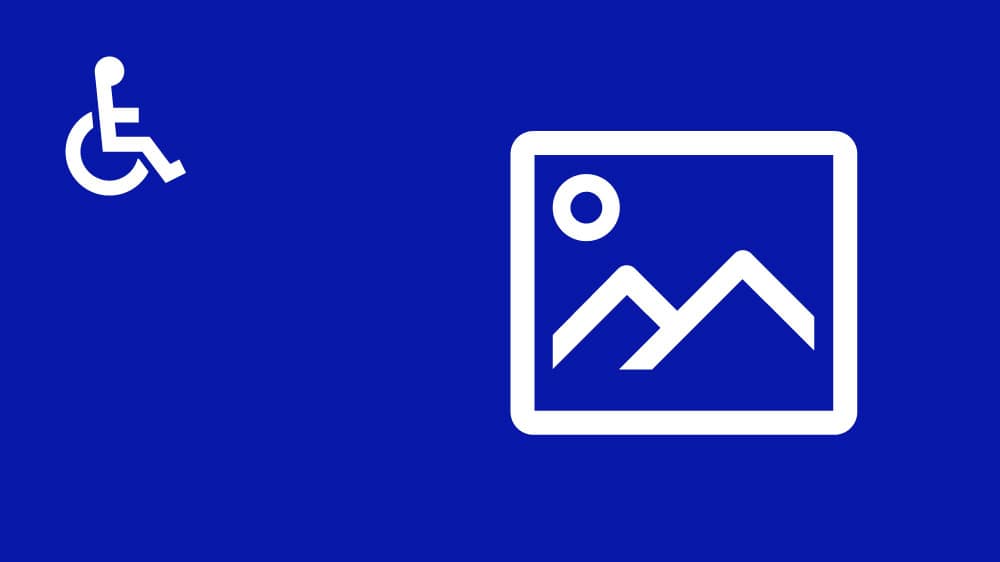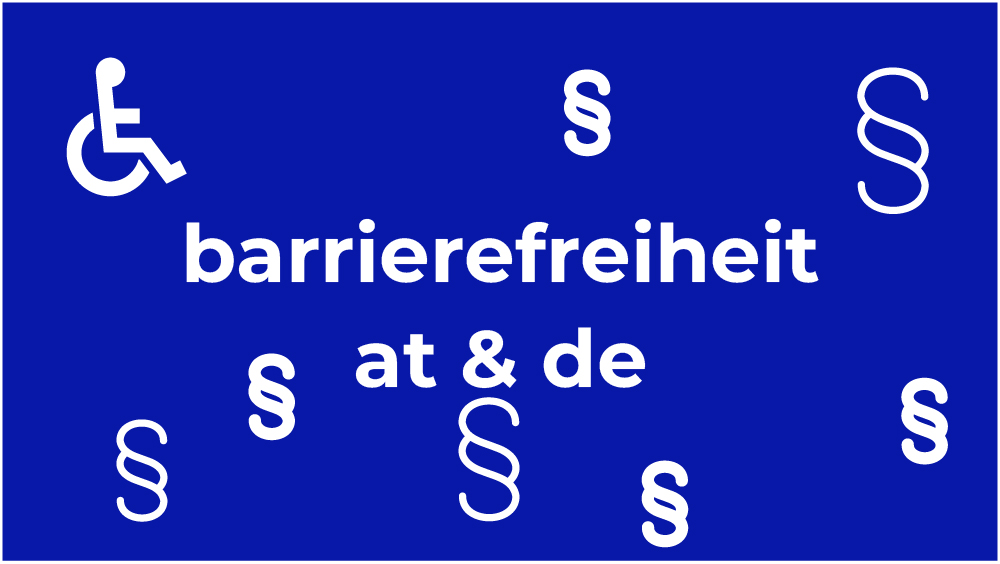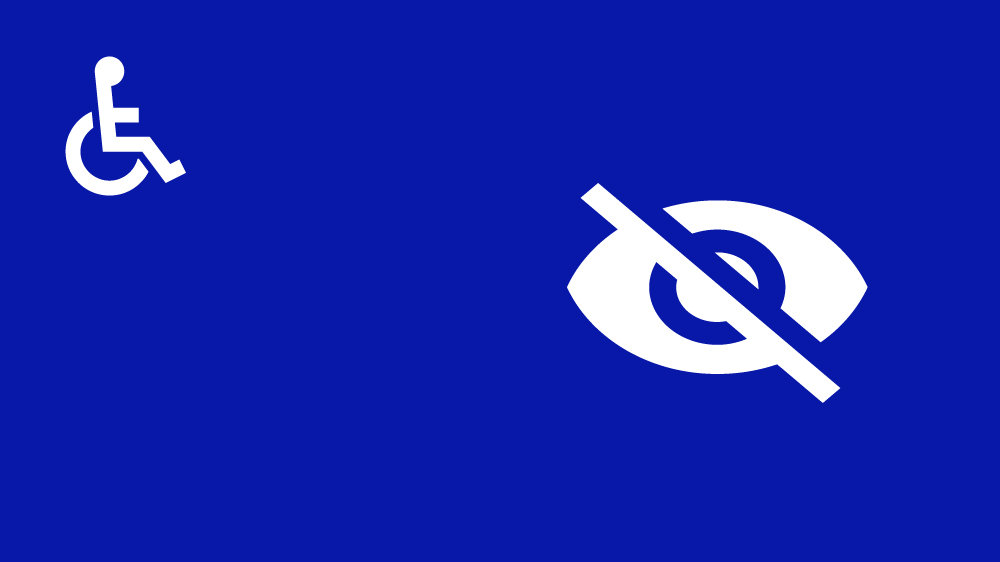Digital accessibility is regulated by law and affects all website operators. This article is about "Accessibility on the web: The most important laws and regulations" that you need to know in order to adapt your website accordingly.
The most important facts at a glance
The EU has several directives to promote digital accessibility, including the European Accessibility Act (EAA), which obliges companies to offer accessible products and services.
In Austria, the Federal Disability Equality Act (BGStG) and the Web Accessibility Act (WZG) regulate digital accessibility and ensure that publicly accessible digital services are barrier-free.
Compliance with the Web Content Accessibility Guidelines (WCAG) and European standards such as EN 301 549 is crucial for the implementation of web accessibility and can have legal consequences in the event of non-compliance.
Important EU directives on digital accessibility
The European Union has introduced several important directives to promote digital accessibility and ensure that people with disabilities have equal access to products and services. These directives set standards that must be implemented in the member states to ensure uniform accessibility.
European Accessibility Act
The European Accessibility Act (EAA) was introduced to promote cross-border trade and improve the accessibility of products and services. The EAA affects numerous areas such as:
E-Banking
E-Commerce
E-Books
E-ticketing
It ensures that these services are accessible to all people. The EAA is particularly important for people with disabilities and older people, as it makes it easier for them to access important services.
Companies are obliged to offer accessible products and services and to document and maintain compliance with accessibility requirements. This not only creates equal opportunities for people with disabilities, but also opens up new market opportunities for companies that offer accessible solutions.
Web Content Accessibility Guidelines (WCAG)
The Web Content Accessibility Guidelines (WCAG) are internationally recognized guidelines that define standards and recommendations for the design of accessible websites. These guidelines were developed by the World Wide Web Consortium (W3C) and are established as an international standard for web accessibility.
The WCAG contain specific success criteria that websites must fulfill in order to be considered accessible. These criteria are divided into different levels of conformance: Level A, AA and AAA, with AA being the minimum requirement for accessibility. To ensure that websites are usable for people with disabilities, they must comply with WCAG 2.2 Level AA.
National laws on accessibility in Austria
In Austria, there are several national laws that regulate digital accessibility. These laws ensure that all publicly accessible services are barrier-free and that no one is discriminated against due to a disability.
The most important laws include the Federal Disability Equality Act (BGStG) and the Web Accessibility Act (WZG).
Federal Disability Equality Act (BGStG)
The Federal Disability Equality Act (BGStG) defines disability as the effect of physical, mental or psychological functional impairments as well as impairments of sensory functions. The aim of the BGStG is to prevent and eliminate discrimination on the basis of disabilities and to create barrier-free access to services for people with disabilities.
Web Accessibility Act (WZG)
The Web Accessibility Act (WZG) obliges the Republic of Austria to make federal websites and mobile applications accessible. Private companies that receive public funding must also provide accessible digital services.
This ensures that all citizens, regardless of their abilities, have access to important information and services, including sms services.
Technical standards and norms
Technical standards and norms play a decisive role in the implementation of accessibility on the web. They provide clear specifications and criteria that must be adhered to in order to ensure that digital offerings are accessible to all. The most important standards include EN 301 549 and the recommendations of the World Wide Web Consortium (W3C).
EN 301 549
EN 301 549 is a European standard that specifies accessibility requirements for ICT products and services. This standard specifies accessibility requirements for information and communication technology in the public sector and makes strong reference to the Web Content Accessibility Guidelines (WCAG) 2.1 of the W3C.
The current version of EN 301 549, published in March 2021, has been the harmonized standard since 12 August 2021 and is referenced as the authoritative standard in BITV 2.0.
World Wide Web Consortium (W3C)
The World Wide Web Consortium (W3C) develops and publishes guidelines for the accessible design of websites. The best-known guidelines are the Web Content Accessibility Guidelines (WCAG), which are regarded as the international standard for web accessibility.
The current WCAG 2.1 guidelines are available in English, while the previous version WCAG 2.0 is also available in German.
Practical steps for implementing accessibility on the web
Concrete measures are necessary to ensure accessibility on the web. This includes creating accessible content, testing and checking accessibility as well as regular training and awareness-raising.
Create accessible content
Accessible content is the key to an inclusive website. Texts should be easy to read, with strong contrasts and clear colors. Clear and short sentences and active language make it easier to understand the content.
Alternative texts for images and videos are essential so that people with visual impairments can also understand the content.
Testing and checking accessibility
The accessibility of a website should be tested and checked regularly. Automated tools such as the Contrast Checker from WebAIM and the Accessibility Evaluation Tool from Wave can help to identify barriers.
Manual testing and feedback from users with disabilities provide additional insights and ensure that the website is accessible to all.
Training and sensitization
Regular training and education is essential to keep up to date with accessibility standards and technologies. Accessibility experts can help identify specific problems and find solutions.
Legal consequences of non-compliance
Failure to comply with accessibility requirements can have serious legal consequences. These include claims for damages and administrative penalties.
Claims for damages
Consumers can assert claims for damages if they have suffered a specific loss.
Companies have the opportunity to lodge an appeal against decisions made by the Ministry of Social Affairs.
Penalties and sanctions
Administrative penalties for non-compliance with the legal requirements can amount to up to EUR 80,000. The principle of "advice before punishment" is particularly important for one-off or minor infringements.
Advantages of an accessible website
Accessible websites offer numerous advantages, including reaching new target groups and improving the user experience.
Development of new target groups
Accessible websites open up new customer groups by including people with various disabilities and deficits. Accessible websites can also reach people with visual or hearing impairments who would otherwise be excluded. This not only contributes to social inclusion, but also enables companies to address a broader target group and take advantage of new market opportunities.
Improving the user experience
An accessible website ensures that:
contents are easier to understand
navigation becomes more intuitive
user satisfaction is increased
the website becomes more user-friendly overall
Older people and people with temporary disabilities also benefit from a barrier-free design, as they can access the content more easily.
Accessible websites pay attention to sufficient contrasts and clear colors, which makes the website more pleasant to use.
Examples of successful implementation
Successful examples of accessible websites can be found both in public institutions and in the private sector.
These examples show that the implementation of accessibility is not only possible, but also beneficial.
Public institutions
Municipal websites provide information on community facilities such as housing, transportation plans and recreational facilities. These websites must ensure that the information is accessible to all citizens, regardless of their abilities or limitations.
Educational websites also have an important role to play in ensuring that students with different access requirements and learning styles are supported. Healthcare websites should be accessible so that everyone has access to important medical information and services.
Private companies
Private companies such as Apple and Microsoft are leading the way in implementing accessibility on their websites. Apple's website includes features such as screen reader compatibility and customizable display options, making it a leader in accessibility. Microsoft has made significant strides in web accessibility, particularly by applying inclusive design principles to their entire digital presence.
These examples show that the integration of accessibility can also be successfully implemented in the private sector.
Summary
Digital accessibility is an essential part of an inclusive society and requires the cooperation of governments, companies and individuals. The EU directives, national laws in Austria and technical standards such as EN 301 549 and WCAG provide clear guidelines for implementation. Through practical steps such as creating accessible content, testing and verifying accessibility and continuous training, we can ensure that no one is excluded due to barriers.
Accessible websites offer numerous benefits, including reaching new target groups and improving the user experience. Successful examples from public institutions and the private sector show that implementation is possible and worthwhile. Let's work together to make the internet a more inclusive place.
Frequently asked questions
What is accessibility in IT?
Accessibility in IT means unhindered access to buildings, means of transportation and information, especially on the Internet. It promotes equal opportunities and participation.
What is the European Accessibility Act (EAA)?
The European Accessibility Act (EAA) is an EU directive that improves the accessibility of products and services for people with disabilities and older people in order to promote cross-border trade. It affects various areas such as e-banking, e-commerce and e-books.
What are the Web Content Accessibility Guidelines (WCAG)?
The Web Content Accessibility Guidelines (WCAG) are international guidelines for designing accessible websites, developed by the World Wide Web Consortium (W3C). They contain specific success criteria that websites must fulfill in order to be considered accessible.
Which national laws regulate accessibility in Austria?
In Austria, the Federal Disability Equality Act (BGStG) and the Web Accessibility Act (WZG) regulate accessibility, whereby the BGStG defines disability and requires the creation of barrier-free access, while the WZG stipulates the accessibility of digital services.
Which technical standards support web accessibility?
The most important technical standards to support web accessibility are the European standard EN 301 549 and the recommendations of the World Wide Web Consortium (W3C), in particular the WCAG.
